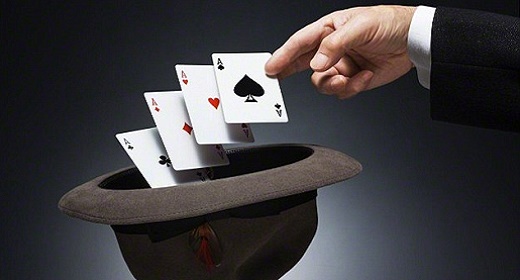by Shelley Carson: He is one of the world’s best known and most successful entrepreneurs, with hundreds of patents to his name—including the Segway scooter.  But you will never see Dean Kamen in a suit and tie: the eccentric inventor dresses almost exclusively in denim. He spent five years in college before dropping out, does not take vacations and has never married. Kamen presides (along with his Ministers of Ice Cream, Brunch and Nepotism) over the Connecticut island kingdom of North Dumpling, which has “seceded” from the U.S. and dispenses its own currency in units of pi. Visitors are issued a visa form that includes spaces on which to note identifying marks on both their face and buttocks.
But you will never see Dean Kamen in a suit and tie: the eccentric inventor dresses almost exclusively in denim. He spent five years in college before dropping out, does not take vacations and has never married. Kamen presides (along with his Ministers of Ice Cream, Brunch and Nepotism) over the Connecticut island kingdom of North Dumpling, which has “seceded” from the U.S. and dispenses its own currency in units of pi. Visitors are issued a visa form that includes spaces on which to note identifying marks on both their face and buttocks.
Kamen, who works tirelessly at inspiring kids to pursue careers in science and engineering, is one of many highly creative people whose personal behavior sometimes strikes others as odd. Albert Einstein picked up cigarette butts off the street to get tobacco for his pipe; Howard Hughes spent entire days on a chair in the middle of the supposedly germ-free zone of his Beverly Hills Hotel suite; the composer Robert Schumann believed that his musical compositions were dictated to him by Beethoven and other deceased luminaries from their tombs; and Charles Dickens is said to have fended off imaginary urchins with his umbrella as he walked the streets of London. More recently, we have seen Michael Jackson’s preoccupation with rhinoplasty, Salvador Dalí’s affection for dangerous pets and the Icelandic singer Björk dressed for the Oscars as a swan.
It isn’t just average Joes who perceive highly creative individuals as eccentric. These individuals often see themselves as different and unable to fit in. The latest findings in brain imaging, creativity research and molecular biology suggest that these perceptions are not just based on a few anecdotal accounts of “weird” scientists and artists. In fact, creativity and eccentricity often go hand in hand, and researchers now believe that both traits may be a result of how the brain filters incoming information. Even in the business world, there is a growing appreciation of the link between creative thinking and unconventional behavior, with increased acceptance of the latter.
Making the Connection
The incidence of strange behavior by highly creative individuals seems too extensive to be the result of mere coincidence. As far back as ancient Greece, both Plato and Aristotle made comments about the peculiar behavior of poets and playwrights. (Aristotle was also the first to note the relation between creativity and depression, an association that has been substantiated by modern research.) More than a century ago Italian criminologist Cesare Lombroso catalogued the bizarre behavior of creative luminaries in his book The Man of Genius and attributed this behavior to the same hereditary “degeneration” that marked violent criminals.
In the past few decades psychologists and other scientists have explored the connection using empirically validated measures of both creativity and eccentricity. To measure creativity, researchers may look at an individual’s record of creative achievements, his or her involvement in creative activities or ability to think creatively (for example, to come up with new uses for ordinary household items). To measure eccentricity, researchers often use scales that assess schizotypal personality.
Schizotypal personality can appear in a variety of forms, including magical thinking (fanciful ideas or paranormal beliefs, such as Schumann’s belief that Beethoven channeled music to him from the grave), unusual perceptual experiences (distortions in perception, such as Dickens’s belief that he was being followed by characters from his novels), social anhedonia (a preference for solitary activities—Emily Dickinson, Nikola Tesla and Isaac Newton, for example, favored work over socializing), and mild paranoia (unfounded feelings that people or objects in the environment may pose a threat, such as Hughes’s legendary distrust of others).
Schizotypal personality is a milder version of the clinical psychiatric condition called schizotypal personality disorder, which is among a cluster of personality disorders labeled “odd or eccentric” in the American Psychiatric Association’s Diagnostic and Statistical Manual of Mental Disorders. The schizotypal diagnosis grew out of large epidemiological studies in which researchers noticed that the relatives of individuals diagnosed with schizophrenia were more likely to exhibit odd behaviors and beliefs than relatives of those not afflicted with schizophrenia. Schizotypal people, for instance, may dress in an idiosyncratic style; their speech patterns may be somewhat out of the ordinary; they may respond ineptly in social situations; their emotional responses may be inappropriate; they may believe in supernatural phenomena such as telepathy and omens; and they may be hard to get close to—both physically and emotionally. In short, schizotypal individuals are eccentric.
Not all schizotypal people have a personality disorder, however. They are often very high functioning, talented and intelligent. Many of my students at Harvard University, for example, score far above average on schizotypal scales, as well as on creativity and intelligence measures.
Nature or Nurture?
The first scientific evidence of a connection between schizotypal personality and creativity came from a 1966 study by American behavioral geneticist Leonard Heston. In this classic study, Heston reported that children adopted away from their schizophrenic biological mothers at birth were more likely to pursue creative careers and interests than children adopted away from non-afflicted mothers (thus lending support for Lombroso’s theory that the bizarre behaviors that often accompany creativity are inherited).
Harvard researcher Dennis Kinney and his team replicated Heston’s study 40 years later and suggested that schizotypal individuals may inherit the unconventional modes of thinking and perceiving associated with schizophrenia without inheriting the disease itself. In this study, Kinney and his colleagues rated 36 adopted offspring of schizophrenic parents and 36 matched control subjects adopted from nonschizophrenic parents using the Lifetime Creativity Scales. They found that the adopted offspring of schizophrenic individuals who themselves displayed signs of schizotypal personality had higher scores for creativity than the control subjects. The Kinney group also made a new discovery: some of their control subjects who did not have a family history of schizophrenia met the profile for schizotypal personality—and they too scored higher for creativity than other control subjects.
Taking the reverse approach, recent studies by British investigator Daniel Nettle and Australian researchers David Rawlings and Ann Locarnini have confirmed that creative individuals tend to score higher on scales of schizotypal personality than less creative individuals. In my research at Harvard, done in part with my colleague Cynthia A. Meyersburg, I have found that study participants who score high in a measure of creative achievement in the arts are more likely to endorse magical thinking—such as belief in telepathic communication, dreams that portend the future, and memories of past lives. These participants are also more likely to attest to unusual perceptual experiences, such as having frequent déjà vu and hearing voices whispering in the wind.
In two reviews of schizotypy and creativity—published in 1989 and 1997, respectively—both Robert Prentky, now a forensic psychologist at Fairleigh Dickinson University, and J. H. Brod of the University of Oxford concluded that not only do highly creative people display more of the traits associated with schizotypy but that the combination of creativity and schizotypy tends to run in families, again pointing toward a genetic component.
How could weird thoughts and behaviors enhance a person’s ability to think creatively? My research suggests that these manifestations of schizotypal personality in and of themselves do not promote creativity; certain cognitive mechanisms that may underlie eccentricity could also promote creative thinking, however. In my “shared vulnerability” model of how creativity and eccentricity are related, I theorize that one of these underlying mechanisms is a propensity for cognitive disinhibition.
Too Much Information
Cognitive disinhibition is the failure to ignore information that is irrelevant to current goals or to survival. We are all equipped with mental filters that hide most of the processing that goes on in our brains behind the scenes. So many signals come in through our sensory organs, for example, that if we paid attention to all of them we would be overwhelmed. Furthermore, our brains are constantly accessing imagery and memories stored in our mental files to process and decode incoming information. Thanks to cognitive filters, most of this input never reaches conscious awareness.
There are individual differences in how much information we block out, however; both schizotypal and schizophrenic individuals have been shown to have reduced functioning of one of these cognitive filters, called latent inhibition (LI). Reduced LI appears to increase the amount of unfiltered stimuli reaching our conscious awareness and is associated with offbeat thoughts and hallucinations. It is easy to see that allowing unfiltered information into consciousness could lead to strange perceptual experiences, such as hearing voices or seeing imaginary people.
Cognitive disinhibition is also likely at the heart of what we think of as the aha! experience. During moments of insight, cognitive filters relax momentarily and allow ideas that are on the brain’s back burners to leap forward into conscious awareness, in the same manner that bizarre thoughts surface in the mind of the psychotic individual. Consider this example from Sylvia Nasar’s 1998 book A Beautiful Mind, about Nobel Prize winner (and diagnosed with schizophrenia) John Forbes Nash. When asked why he believed that aliens from outer space were contacting him, he responded: “Because the ideas I had about supernatural beings came to me the same way that my mathematical ideas did. So I took them seriously.” (Nash’s case illustrates how the cognitive mechanism of the eureka moment is similar to the delusional experience called thought insertion, in which individuals suffering from psychosis believe that outside forces have placed thoughts in their brains. Most people suffering from psychosis or schizophrenia do not produce ideas that are considered creative, however. The ability to use cognitive disinhibition in a creative way depends on the presence of additional cognitive abilities associated with a high level of functioning.)
Reduced cognitive filtering could explain the tendency of highly creative people to focus intensely on the content of their inner world at the expense of social or even self-care needs. (Beethoven, for example, had difficulty tending to his own cleanliness.) When conscious awareness is overpopulated with unusual and unfiltered stimuli, it is difficult not to focus attention on that inner universe.
In 2003 my colleague Jordan Peterson and I reported on research we conducted at Harvard and the University of Toronto, where we found that highly creative individuals are more likely to display cognitive disinhibition when compared with those who are less creative. In a series of studies, we tested several hundred subjects on a latent inhibition task (a measure of how easily subjects ignore stimuli to which they have already been exposed). We also measured creativity in several different ways, including divergent thinking tasks (which require a large number of responses or solutions to a problem), openness to experience (the personality trait most highly predictive of creativity), the Creative Personality Scale, and the Creative Achievement Questionnaire (a measure of lifetime creative achievement). When we looked at high scorers on each of these creative measures, we found that they were more likely to have lower scores on the latent inhibition task (indicating cognitive disinhibition) than were the less creative subjects. We think that the reduction in cognitive inhibition allows more material into conscious awareness that can then be reprocessed and recombined in novel and original ways, resulting in creative ideas.
rain-imaging and electroencephalography (EEG) studies support the theory that highly creative individuals tend to experience more cognitive disinhibition than do less-creative control groups. Beginning in the late 1970s, researcher Colin Martindale of the University of Maine initiated a series of EEG studies related to creativity. He and his colleagues found that highly creative people tend to produce more brain waves in the alpha range (a frequency of eight to 12 hertz, or cycles per second) during creative tasks than do less creative people. Martindale and his group interpreted alpha power as a marker of decreased cortical arousal and defocused attention and suggested that creative people were allowing more information into their conscious awareness during creative work.
Andreas Fink and his group at the University of Graz in Austria, who replicated Martindale’s findings in a set of studies over the past five years, have a different interpretation of the increased alpha waves associated with creativity. They say increased alpha activity indicates that the brain is focusing on internally generated stimuli rather than on the outside world. This interpretation explains the tendency of creative people to focus on their inner lives, which is also a sign of schizotypal personality.
Other brain research, published in 2009 by John Kounios of Drexel University and Mark Beeman of Northwestern University, has examined the aha! moment in greater detail. Kounios and Beeman had subjects solve word-association problems while their brain patterns were recorded using either functional magnetic resonance imaging or EEG. (For example, think of a word that can form a compound word with all three of the following words: crab, pine, sauce. The answer is “apple.”) Subjects signaled the exact moment the answer came to them, and whether they had come to the solution through trial and error or in a sudden rush of insight. The results indicate that a period of alpha activity precedes a burst of gamma activity (characterized by brain waves in the bandwidth above 40 Hz) at the moment of insight. Kounios and Beeman surmise that alpha activity focuses attention inward, whereas the gamma burst coincides with the arrival of the solution into conscious awareness.
Another brain-imaging study, done in 2010 by investigators at the Karolinska Institute in Stockholm, suggests the propensity for both creative insights and schizotypal experiences may result from a specific configuration of neurotransmitter receptors in the brain. Using positron-emission tomography, Örjan de Manzano, Fredrik Ullén and their colleagues examined the density of dopamine D2 receptors in the subcortical region of the thalamus in 14 subjects who were tested for divergent-thinking skills. The results indicate that thalamic D2 receptor densities are diminished in subjects with high divergent-thinking abilities, similar to patterns found in schizophrenic subjects in previous studies. The researchers believe that reduced dopamine binding in the thalamus, found in both creative and schizophrenic subjects, may decrease cognitive filtering and allow more information into conscious awareness.
Several studies have linked gene variations that are associated with the neurotransmitter dopamine to both creativity and eccentricity. Hungarian researcher Szabolcs Kéri, who reported in 2009 that highly creative achievers were more likely to have a variant of the neuregulin 1 gene previously associated with schizophrenia, speculated that this gene variation facilitates cognitive disinhibition. These findings support the theory that cognitive disinhibition may be affected by genetic variations and that it may be one factor that predisposes an individual to both creative thought and eccentricity.
The Importance of Intelligence
Clearly, however, not all eccentric individuals are creative. Work from our lab indicates that other cognitive factors, such as high IQ and high working-memory capacity, enable some people to process and mentally manipulate extra information without being overwhelmed by it. Through a series of studies, we have, in fact, shown that a combination of lower cognitive inhibition and higher IQ is associated with higher scores on a variety of creativity measures.
The shared vulnerability model suggests that at least a subgroup of highly creative individuals may share some (but not all) biological vulnerability factors with individuals who suffer from psychotic illnesses, such as schizophrenia. This vulnerability may allow the highly creative person access to ideas and thoughts that are inaccessible to those of us with less porous mental filters.
For several years I have included a question in my creativity research that asks “Do you often feel like a square peg in a round hole?” Participants who score high on the Creative Achievement Questionnaire have answered “yes” significantly more often than those who have low scores in creative achievement. In fact, one participant—a Hollywood screenwriter—answered “no” but then wrote below the question: “I don’t feel like a square peg trying to fit into a round hole. I feel like an octagonal peg with conical appendages.”
The good news is that the plight of square pegs may be improving. The ascendancy of innovative technology as a key factor in economic growth has elevated creativity from merely a positive trait to a highly sought-after commodity in the global market. Many leading corporations—such as Coca Cola, DuPont, Citigroup and Humana—now have chief innovation officers on their leadership teams. Prestigious business schools—such as Harvard, Stanford, Columbia and Yale—have added courses on creativity to their curricula. And Fortune 500 companies, including PepsiCo, Bristol-Meyers Squibb, Aetna and Marriott, now routinely put employees through creativity training programs. Trainers in these classes use a variety of tools and techniques to help noneccentrics open their minds to “out of the box” thoughts and stimuli that might otherwise be ignored or suppressed.
As the market value of creative thinking increases, the round-hole world may continue to make adjustments to accommodate and assimilate eccentrics. Such accommodations already exist in communities with high concentrations of artists, writers, scientists and computer geeks. Managers within these communities tolerate bizarre clothing choices, disregard of normal social protocols and nontraditional work schedules in the interest of promoting innovation. At Dean Kamen’s company, Deka Research & Development, for example, not only is denim well accepted but employees are allowed—even expected—to solve problems and complete tasks in whatever way works best for them.
Square pegs (and octagonal pegs with conical appendages) no longer have to work so hard at fitting in. It is high time. Indeed, we all owe a deep debt of gratitude to those whose creative work has been accomplished at the expense of square-peg feelings of alienation and ostracism. The creative efforts of eccentrics add richness, beauty and innovation to the lives of those of us who have fit somewhat more comfortably into our round holes.









































